A century ago, in the first days of what would be UCLA
as we know it, the founding class took on the responsibility to build a foundation
for a university that would stand the test of time. The inaugural yearbook notes, “In ten years, or in twenty, we shall look
with amazement upon its development, for it is certain to be greater, far greater,
than the imagination of any of us can foresee.”
 The history of UCLA tells the story of Los Angeles as it grew from citrus groves
and wide open spaces, the individuals who have strived for the best in education
for all Californians and the ongoing drive to create a legacy of lasting value.
The history of UCLA tells the story of Los Angeles as it grew from citrus groves
and wide open spaces, the individuals who have strived for the best in education
for all Californians and the ongoing drive to create a legacy of lasting value.
 The history of UCLA tells the story of Los Angeles as it grew from citrus groves
and wide open spaces, the individuals who have strived for the best in education
for all Californians and the ongoing drive to create a legacy of lasting value.
The history of UCLA tells the story of Los Angeles as it grew from citrus groves
and wide open spaces, the individuals who have strived for the best in education
for all Californians and the ongoing drive to create a legacy of lasting value.
A Growing City
In 1850, California became the 30th state and early innovations during these industrious years added to the Southland’s development
— railroads made cross-country travel and trade affordable and relatively easy,
Edward Doheny discovered oil at Greasy Gulch and water flowed to Los Angeles from
the Owens Valley through engineer William Mulholland’s aqueduct. Los Angeles’ balmy
climate, plentiful natural resources and wealth of opportunity saw the population
rise from an estimated 100,000 in 1900 to over one million by the 1920s.
The University of California was established in 1868, with the first campus at Berkeley.
The university is included in California’s Constitution as a public trust, “independent
of all political or sectarian influence and kept free therefrom in the appointment
of its regents and in the administration of its affairs." A governing body was established,
the Regents of the University of California, giving them autonomy
over university management.
By the early 1900s Los Angeles was a diverse and engaging place to live — home to
museums, movie studios and a symphony orchestra, one of the first in the country.
The city’s public school system was established in the 1850s and the city’s first
college in 1865, with the expanding population creating an ongoing and critical
need for more trained teachers. After an active campaign by local Angelenos, in
1881 Governor George C. Perkins signed California Senate Bill 187 into law creating
the Branch State Normal School of California in Los Angeles. Normal school was the
term commonly used for an institution that educated teachers.
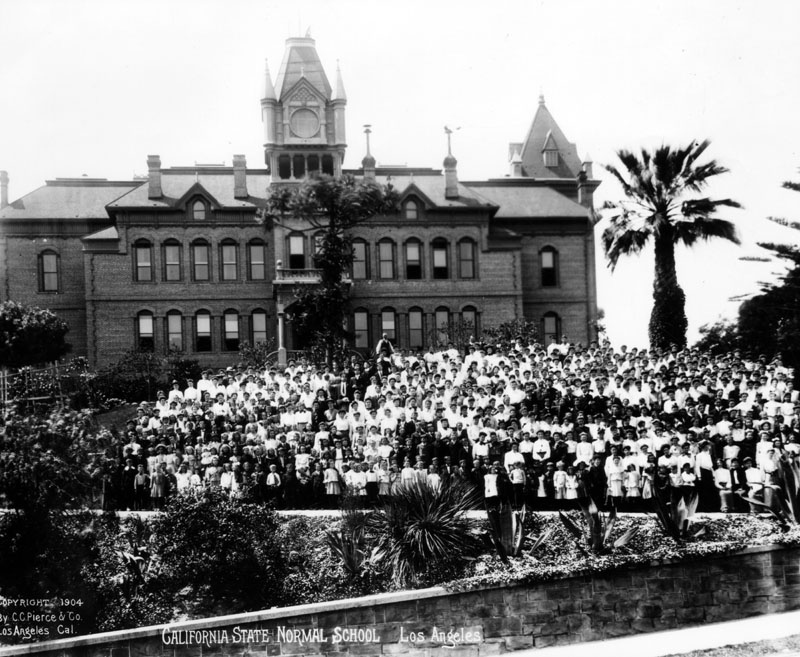
Grand & 5th Street Campus
The Southern Branch

Edward A. Dickson

Ernest Moore
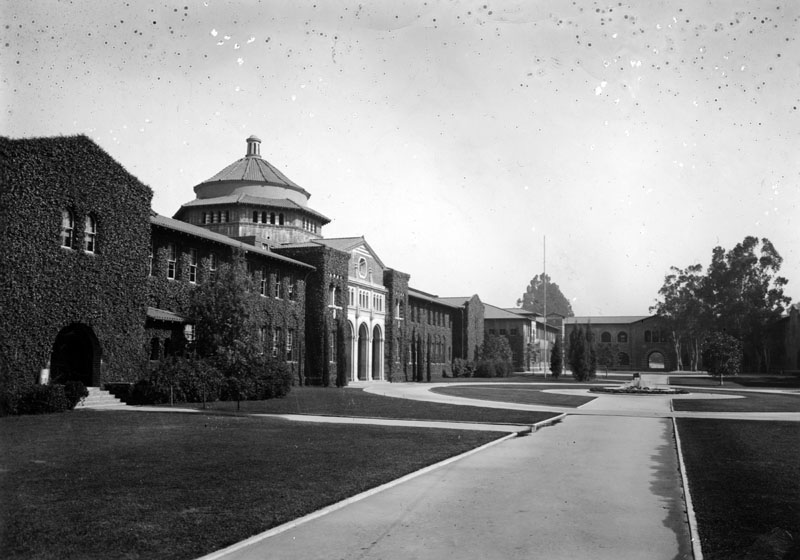
Vermont Avenue Campus
These early Bruins, although they wouldn’t be called so for a few more years, welcomed
their role as founders. The yearbook describes the mood of excitement and anticipation,
“When the doors were unlocked upon the morning of September 15th, and students once
more flooded the halls after a long summer vacation, it was not upon the Los Angeles
State Normal School which they had left in June that their gaze fell, but upon The
Southern Branch of the University of California. The beautiful buildings and charming
grounds surrounding assumed a new glamour which those who entered after June, 1919,
will never comprehend. They were enhanced and glorified to meet the new and welcome
responsibilities which naturally followed.”
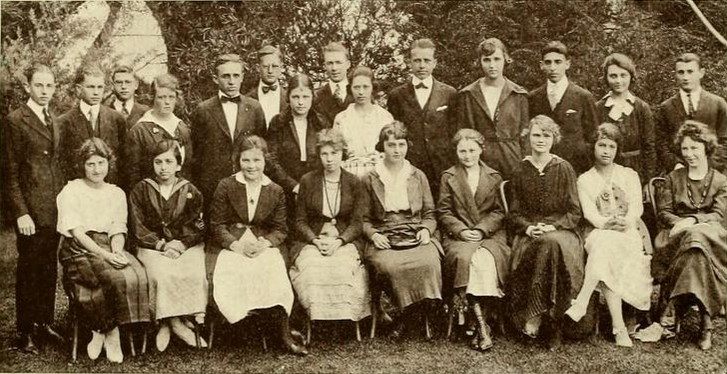
The Cub Californian Staff
The First Graduating Class
In 1923 the Southern Branch awarded its first two-year
degrees, students who wanted to pursue a bachelor’s degree had to transfer to UC
Berkeley or another college.
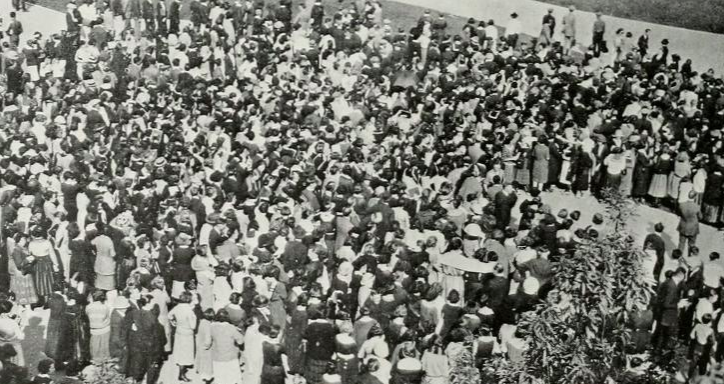 Leadership, students and community members were determined the school should continue
to grow, but the idea of expanding it to a four-year degree granting institution
faced resistance from members of the UC Board of Regents and UC President David
Prescott Barrows. At an on campus meeting to discuss the idea, students gathered
outside chanting and singing.
Leadership, students and community members were determined the school should continue
to grow, but the idea of expanding it to a four-year degree granting institution
faced resistance from members of the UC Board of Regents and UC President David
Prescott Barrows. At an on campus meeting to discuss the idea, students gathered
outside chanting and singing.

Regents Rally
At last, a third year was approved, paving the way for UCLA to become a four-year
degree-granting institution. Edward Dickson wrote in the 1923 yearbook, “It is for you to establish and help maintain
at this Southern Branch the ideals of the University of California. Its history
and traditions are yours. They call for the best that is in you. Give it.”
In Feb. 1923, the Regents approved a fourth year of study, and in 1925 the Southern
Branch awarded the first ever Bachelor of Arts degrees to 100 women and 24 men.
The
1925 yearbook states, “Future progress is inevitable, but will depend upon
the efforts of those who leave the University’s portals during the next decade.
In the meantime we are building Californians. It is enough.”

Alumni Board
A New Home
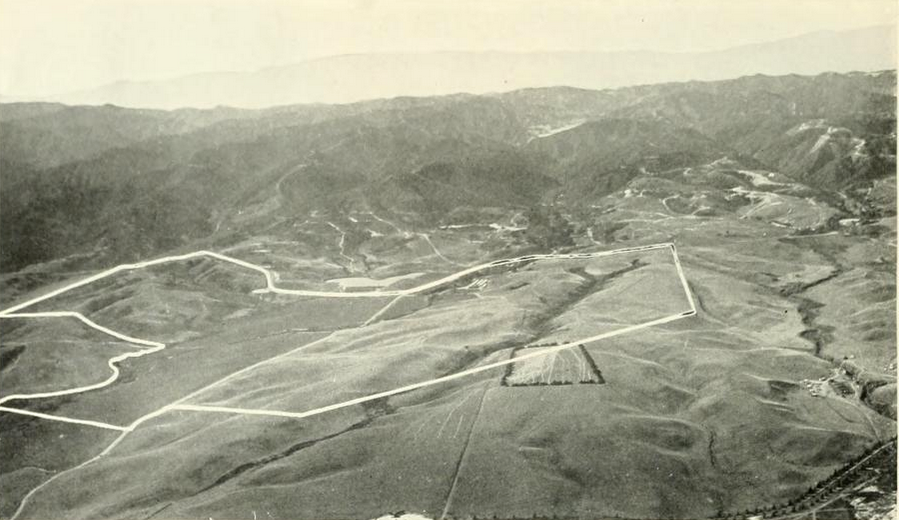
Site of Future University
After Alanis’s death, Benjamin Davis Wilson, the second mayor of Los Angeles became
the owner. He sold to William Wolfskill, credited with industrializing California's
citrus industry, and the property became known as Wolfskill Ranch.
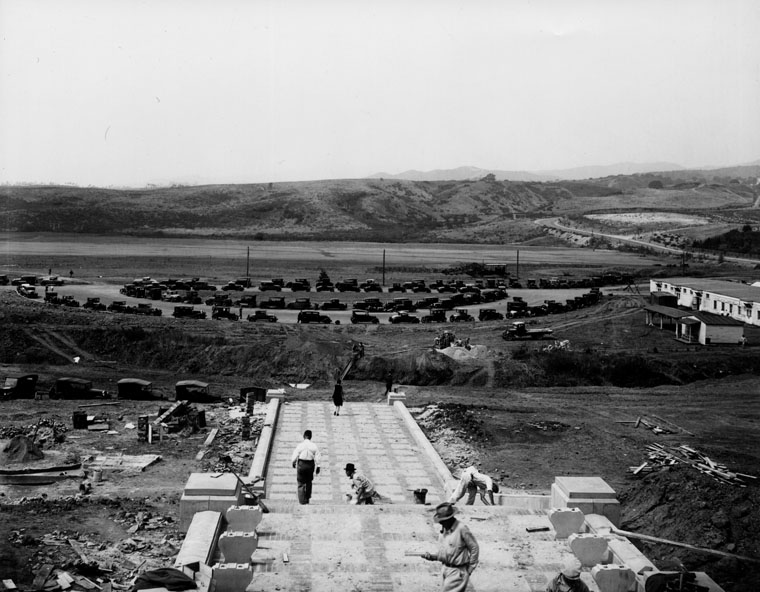 Wolfskill sold to Englishman Arthur Letts Sr., founder of the Broadway and Bullocks
department stores. After his death, Letts’ son-in-law Harold Janss and his brother,
owners of Janss Investment Company, sold to the university at a discounted price.
The Janss Investment Company went on to develop Westwood Village and the surrounding
neighborhoods. Janss Steps are named for the two brothers.
Wolfskill sold to Englishman Arthur Letts Sr., founder of the Broadway and Bullocks
department stores. After his death, Letts’ son-in-law Harold Janss and his brother,
owners of Janss Investment Company, sold to the university at a discounted price.
The Janss Investment Company went on to develop Westwood Village and the surrounding
neighborhoods. Janss Steps are named for the two brothers.

Janss Steps
To raise funds to buy the Westwood property, students, alumni and supporters went
door-to-door to campaign for bond measure Proposition 2.
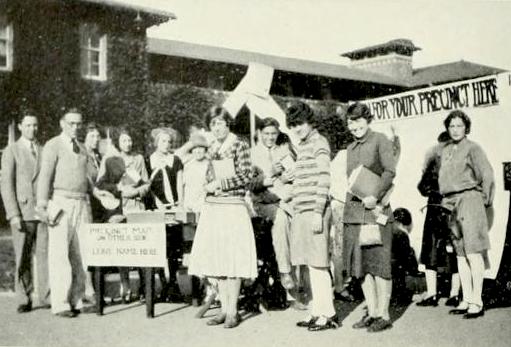 The land was sold to the cities of Los Angeles, Santa Monica and Beverly Hills who
then donated it to the state. In 1926 the University Regents changed the name to
the University of California at Los Angeles (the “at” was replaced by a comma in
1958) and the student council adopted the Bruins nickname. The new Westwood campus
broke ground in September 1927.
The land was sold to the cities of Los Angeles, Santa Monica and Beverly Hills who
then donated it to the state. In 1926 the University Regents changed the name to
the University of California at Los Angeles (the “at” was replaced by a comma in
1958) and the student council adopted the Bruins nickname. The new Westwood campus
broke ground in September 1927.

Students Rally for Westwood Site
From the 1927 yearbook: “Our names, as is only just, will be forgotten. We alone,
however, may take the honor of laying the foundation. To us has been given the pleasure
and joy of pushing into the unknown. The return is worth the effort. And though
our work may be forgotten, its influence will be eternal.”
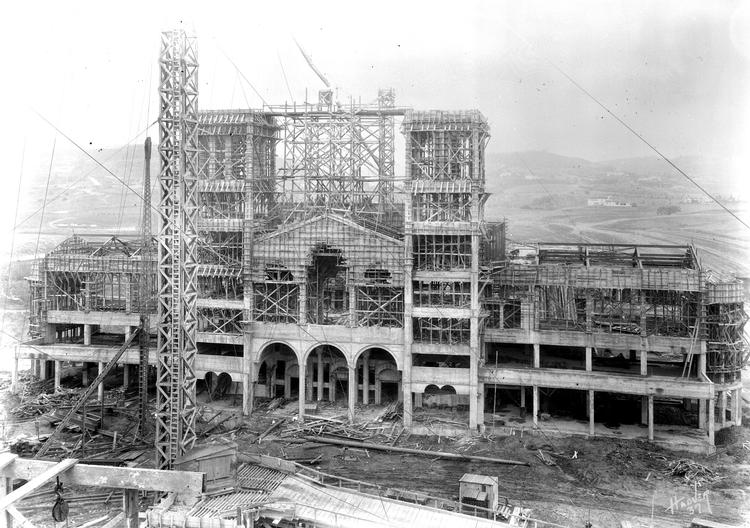
Royce Hall Under Construction - 1928

Tree Planting Ceremony at Founders Rock
In 1929, 10 years after the Southern Branch of the University of California at Los
Angeles opened its gates, 5,000 students started classes at the Westwood campus.
As Moore had predicted in the 1919 yearbook, the school’s development had exceeded
imagination. One can only wonder at the inaugural class’s delight and pride in today’s
university. As UCLA celebrates the accomplishments of its first 100 years, it retains
the original spirit of shared purpose and responsibility. As Moore wrote in 1919,
“We have developed a feeling of unity and of cordial co-operation, which have made
our life together a very real community of endeavor. The school has drive and energy.
It also has good will, kindliness, and joy in plentiful measure.”